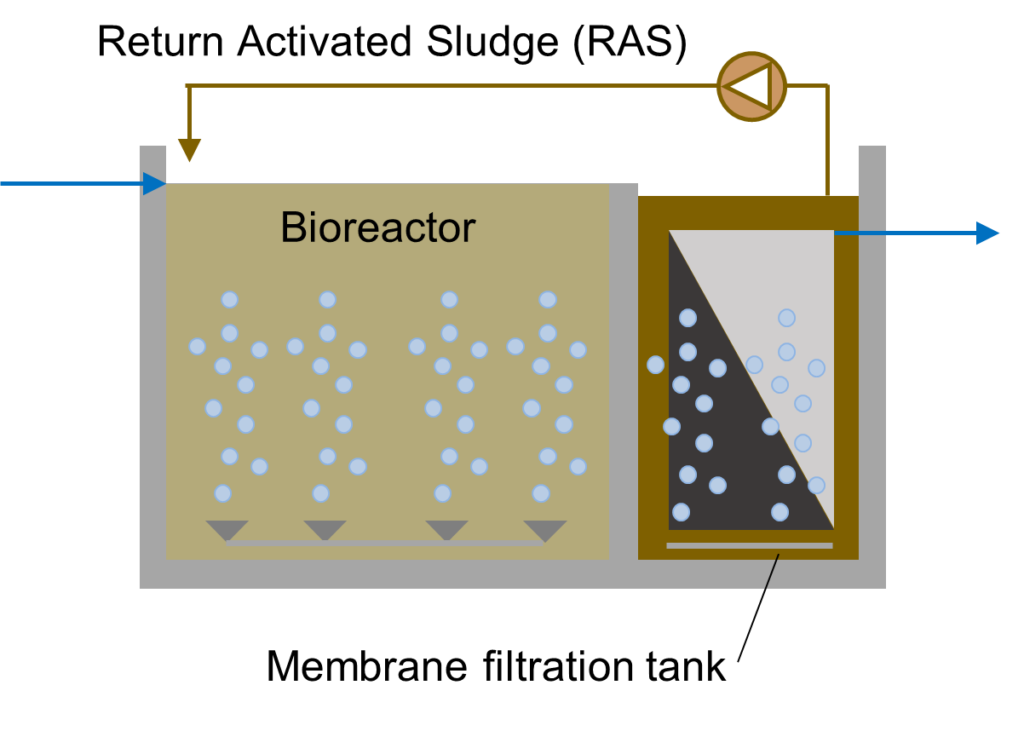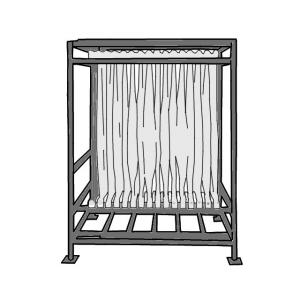Exploring the Environmental Impact of Membrane Bioreactor in Wastewater Treatment
Exploring the Environmental Impact of Membrane Bioreactor in Wastewater Treatment
Blog Article
Membrane Bioreactors Explained: Effective Solutions for Tidy Water
Membrane bioreactors (MBRs) have arised as an innovative option for attending to the pressing challenges of wastewater therapy - Membrane Bioreactor. By integrating biological processes with advanced membrane layer purification, MBRs not just boost the top quality of treated water however likewise minimize the spatial demands of treatment facilities.

What Are Membrane Layer Bioreactors?
Membrane bioreactors (MBRs) are innovative wastewater treatment systems that combine biological degradation processes with membrane layer filtration innovation. This integration enables the reliable elimination of contaminants from water, making MBRs a favored selection in various applications, consisting of metropolitan wastewater therapy and industrial effluent administration.

One of the important benefits of MBRs is their capacity to create premium effluent, often ideal for reuse in watering or industrial processes. Additionally, MBRs require a smaller sized impact compared to traditional therapy systems, making them perfect for urban setups where space may be limited.
In addition, MBRs can successfully handle varying influent tons and are much less vulnerable to the effects of harmful shocks. These qualities contribute to their expanding appeal as a sustainable service for attending to the enhancing need for clean water while decreasing ecological effects.
How Membrane Bioreactors Job
While the operation of membrane bioreactors (MBRs) may seem facility, it fundamentally focuses on the synergy in between biological processes and membrane purification. MBRs integrate a biological treatment process, normally triggered sludge, with a membrane splitting up system to treat wastewater effectively.
In an MBR system, wastewater is first presented into a bioreactor where microbes deteriorate raw material and various other pollutants. The organic activity minimizes the focus of toxins while promoting the development of biomass. Following this organic treatment, the blended liquor goes through membrane filtering, which can be microfiltration or ultrafiltration, depending on the preferred effluent top quality.
The membranes work as a physical barrier, enabling water and tiny solutes to pass while keeping put on hold solids and larger molecules. This makes it possible for the system to maintain a high concentration of biomass within the activator, boosting the treatment effectiveness.
In addition, the continuous separation of treated water from the biomass promotes a portable design and lessens the impact of the treatment facility. Generally, the combination of biological deterioration and membrane layer filtration in MBRs leads to reliable and reputable wastewater treatment, making sure high-quality effluent appropriate for different applications.
Benefits of MBR Modern Technology
One of the crucial benefits of membrane layer bioreactor (MBR) modern technology is its ability to create top notch effluent with a considerably minimized impact contrasted to standard wastewater therapy approaches. MBR systems properly combine organic therapy and membrane layer purification, resulting in premium elimination of impurities, consisting of put on hold solids, virus, and natural issue. This ability results in effluent that commonly satisfies or surpasses strict regulative standards for reuse and discharge.
Additionally, MBR technology enables greater biomass concentrations, which enhances the therapy performance and lowers the called for activator volume. This portable style is especially useful in urban locations where area is limited. The functional versatility of MBR systems also suggests they can adjust to varying influent top qualities and flow rates, making them ideal for a variety of applications.
In addition, the minimized sludge manufacturing associated with MBR processes contributes to reduce operational and maintenance costs. The membrane layers function as a physical obstacle, decreasing the danger of blocking and enabling longer functional durations between cleansing. Generally, the benefits of MBR innovation make it an attractive option for sustainable wastewater treatment, addressing both environmental problems and the need for reliable resource administration.
Applications of Membrane Layer Bioreactors
With their flexibility and performance, membrane layer bioreactors (MBRs) find applications throughout numerous industries, consisting of municipal wastewater treatment, helpful hints commercial procedures, and even water improvement. In metropolitan setups, MBRs provide a small remedy for treating wastewater, efficiently eliminating contaminants while all at once producing premium effluent that fulfills stringent regulatory requirements. This makes them specifically ideal for locations with limited room.
In industrial applications, MBR innovation is used for treating process water, particularly in markets such as food and beverage, pharmaceuticals, and petrochemicals. These markets take advantage of MBRs' capability to manage high natural tons and their effectiveness in recuperating valuable resources from wastewater, such as nutrients and water.
Furthermore, MBRs play a vital duty in water recovery campaigns, making it possible for the reuse of dealt with wastewater for watering, industrial processes, and even as drinkable water after additional treatment (Membrane Bioreactor). Their efficiency in removing toxins and microorganisms makes them a trusted selection for making sure water high quality in various reuse applications
Future of Water Treatment Solutions
The future of water therapy services is poised for transformative innovations driven by technical advancement and enhancing ecological recognition. As worldwide water scarcity ends up being a pressing concern, brand-new approaches, consisting of membrane layer bioreactor (MBR) systems, are readied to play a pivotal duty in enhancing the performance and sustainability of water therapy procedures.
Arising technologies such as fabricated intelligence and equipment knowing are expected to optimize treatment procedures, enabling for real-time monitoring and predictive upkeep. This will enhance the overall dependability and effectiveness of water treatment centers. Developments in membrane layer products, such as graphene and nanofiltration, promise to enhance permeation prices and lower fouling, leading to lower energy usage and functional costs.
Furthermore, the combination of sustainable energy sources right into water therapy plants will certainly contribute to greener practices. The round economic situation version will also gain grip, encouraging the healing of useful resources from wastewater, such as nutrients and power.
Verdict

Membrane bioreactors (MBRs) have arised as an innovative solution for addressing the pushing obstacles of wastewater therapy. By incorporating organic procedures with sophisticated membrane filtration, MBRs not only enhance the top quality of cured water yet likewise minimize the spatial demands of treatment centers.One of the vital benefits of membrane layer bioreactor (MBR) modern technology is its capacity to create top notch effluent with a dramatically minimized impact compared to conventional wastewater therapy techniques.With their flexibility and efficiency, membrane layer bioreactors (MBRs) locate applications across various fields, including local you can find out more wastewater therapy, commercial processes, and also water improvement.In conclusion, membrane layer bioreactors represent a significant improvement in wastewater treatment modern technology, integrating organic processes with efficient membrane layer filtration to generate premium effluent.
Report this page